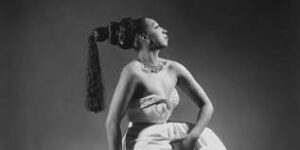Impact on Paris Culture

Created by Paul Colin, 1927

Photographed by Rokiatou Kaba Paris, France
Josephine Baker arrived in Paris in 1925, and her fame took off. When she entered Paris, she started to make a name for herself by using her performance skills. A critical dance that defined Baker’s career was the Charleston dance. The Charleston originated from enslaved people who brought their tribal traditions and music with them from Africa (Caravantes, 2015, pg 22). Many of these enslaved people settled and made a home in Charleston, South Carolina. After Black people received freedom, many moved to New York City and took the dance with them. It became popular in Paris after it was performed in a Black Broadway musical called Runnin’ Wild (Caravantes, 2015, pg 22). Baker took the Charleston dance with her when she went to Paris. She incorporated Charleston in her performances, and this launched the journey of Black culture in Paris. Baker made Charleston famous in Europe by performing at Le Revue Negre at the Théatre des Champs- Elyées in Paris (Caravantes, 2015, pg 22). The one-act performance of Josephine Baker captured the hearts of Parisian society. Due to her successful start in her career in Paris during the 1920s, Baker’s impact allowed her to be seen as “the Black Venus'” (La Vénus Noire). Baker was seen as a modernist artist because her performance gave visual metaphors for different significant meanings. Many artists used her dance poses as a form of art to make different art pieces. Baker became many people’s art muses during her performance (Gordon, 2008, pg 1).
Once she established her early career after La Revue Negre, she took the stage during La Folie du Jour in 1927. During La Folie du Jour, Baker wore a layered beaded necklace and a skirt made out of bananas. Baker was able to attract the French audience during her performance. The audience was drawn to her movement and how exotic she appeared when performing (Henderson, 2008, pg 1 & Caravantes, 2015, pg 29). Many people viewed her as exotic because she was a Black woman; ultimately, many audience members were not exposed to Black culture. However, she took these views and made her own narrative. She used her ‘exoticness’ as a superpower to win over the male gaze. She used this narrative to gain agency and control over her image (Henderson, 2008, pg 4 ). In many photographs, Baker is pictured as a bold, brave and liberated woman. She embodies these traits because she did groundbreaking work and changed Paris.

Michael Ochs Archives//Getty Images